A Living Art at Bonsai West in Littleton, Massachusetts | Garden Spotlight
Eight years ago, I picked up an umbrella tree at Bonsai West, a two-acre nursery in Littleton, Massachusetts, that boasts one of the most extensive bonsai collections outside Japan. The plant was around 15 years old, the cashier told me as I examined its shape. I was taken in by its twisty aerial roots, its […]
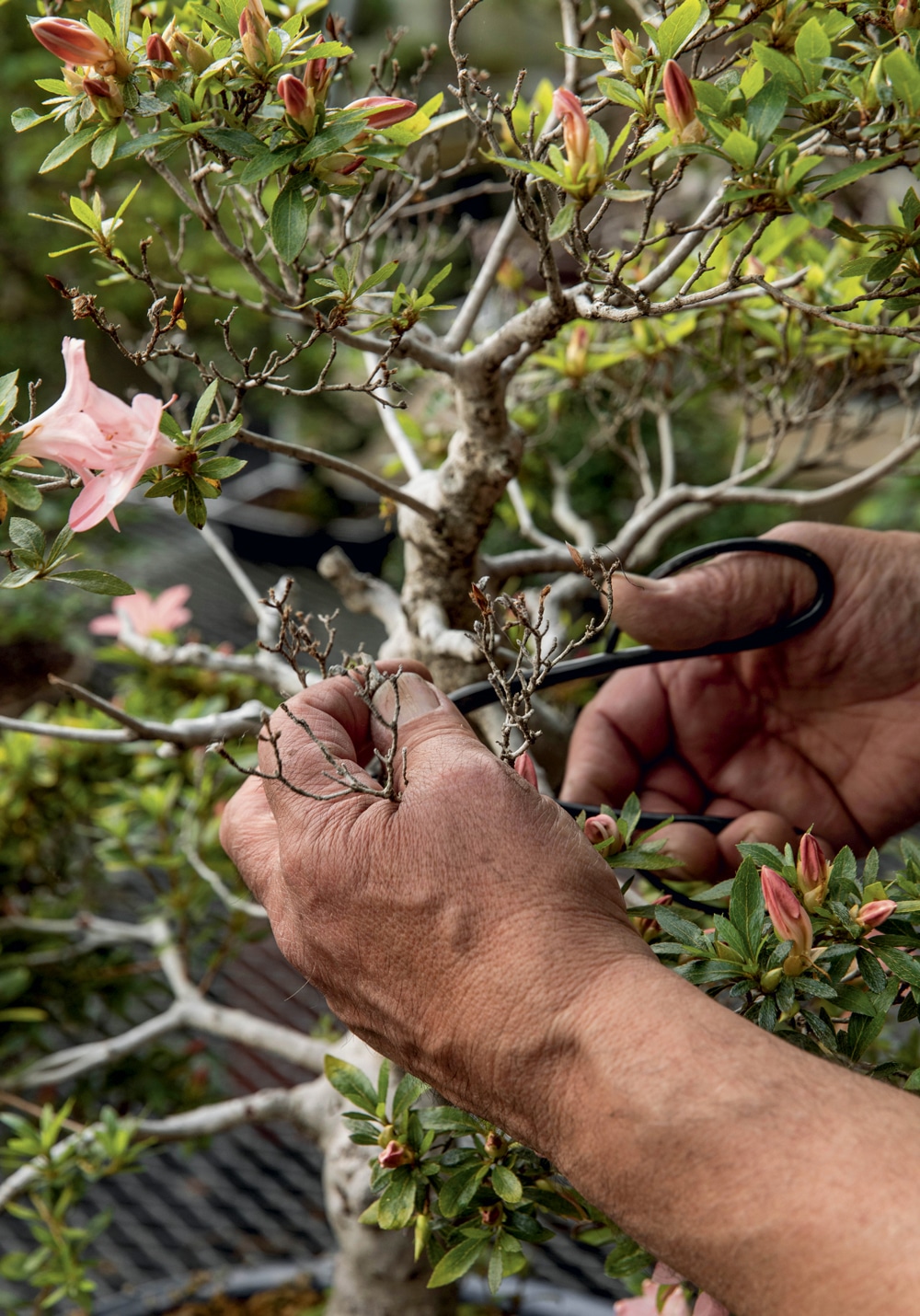
Bonsai West owner Michael Levin refines an azalea bonsai using scissors from Japan specially designed to make precise cuts.
Photo Credit : Greta Rybus
Photo Credit : Greta Rybus
Eight years ago, I picked up an umbrella tree at Bonsai West, a two-acre nursery in Littleton, Massachusetts, that boasts one of the most extensive bonsai collections outside Japan. The plant was around 15 years old, the cashier told me as I examined its shape. I was taken in by its twisty aerial roots, its seven-leaved green whorls, and its brown and crimson glazed pot. It looked like a piece of a miniature forest, whimsical and stately at once. It was, I thought, the perfect birthday gift for a plant-obsessed scientist I had been dating. After a few moments of deliberation, I bought the tropical bonsai, and it lives with us now, in Maine. The scientist and I have been married for going on six years. The bonsai, he says, remains the best gift he has ever received, and I do not try to top it.
Compared with some of the trees at Bonsai West, our umbrella tree is a youngster. Owner Michael Levin has stashed away thousands of specimens, ranging in age from seedling to centenarian, in five greenhouses, in the basement of the 250-year-old farmhouse, and on the landscaped grounds. Some are his creations, while others are trees he’s babysitting or nursing for clients. He has practiced the art for nearly 40 years, and while he doesn’t consider himself a “master” (you have to train in Japan under a special program for that), he does admit, “I hope I’m somewhat good at it.”
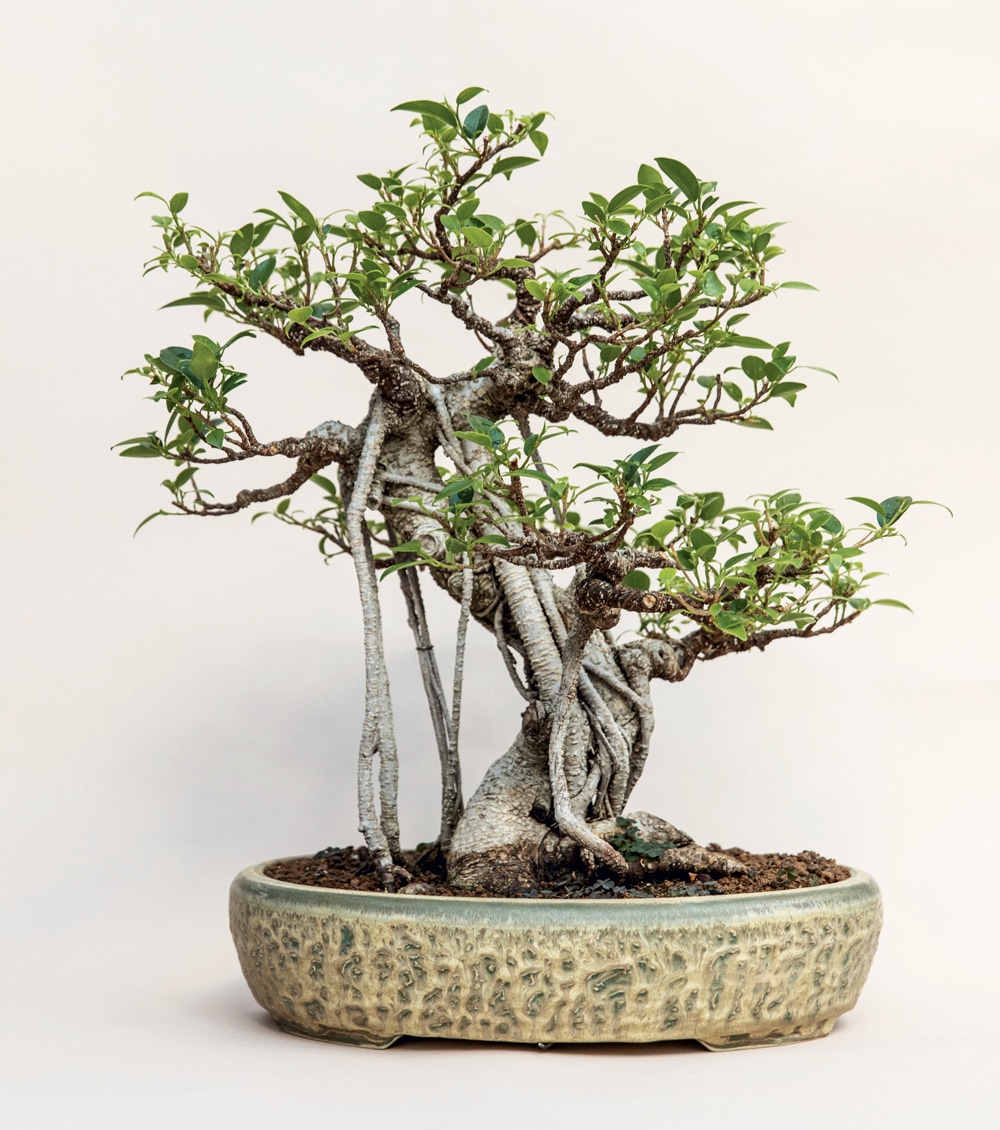
Photo Credit : Greta Rybus
When Levin first started in 1982, he grew his tiny juniper and pine trees in a 12-foot greenhouse in his Brookline, Massachusetts, backyard and sold them door to door from his VW Rabbit or set up on the sidewalk in Harvard Square. Americans were just becoming interested in bonsai, and Levin was on the cutting edge of a trend. As he expanded his collection, he moved from Brookline to Somerville, and eventually to Littleton.
He also made frequent trips to California, where he could buy from first-generation Japanese-American bonsai growers. “They were already old-timers when I bought those trees in the 1980s,” he says. “There are trees here that I’ve had for 35 years. At the time, I thought, How could old man Yamasaki sell me a 30-year-old tree he’s grown? But now, 30 years have gone by. I understand.”

Photo Credit : Greta Rybus
Some of Levin’s trees are familiar—miniature versions of the pines and maples we see every day—but others are wild and sculptural, twisted into forms that look ancient and magnificent. The oldest are a few hundred years, although there are also bonsai that have been trained to grow around 1,000-year-old pieces of bare wood, a more contemporary practice that roughly translates in English to “phoenix graft.”
The goal of traditional bonsai, Levin explains, is to mimic the forms found in nature while providing a sense of composition. Although originally a Chinese art, the main structural rules come from 19th-century Japan. He shows me a redwood that is “being styled to look like a California redwood.” For traditional bonsai, there is a front to a tree and a back, and as you gaze at it, you begin to see the purposeful creation of depth through a layering of branches. “The Japanese would describe it like a cape flowing behind royalty.”
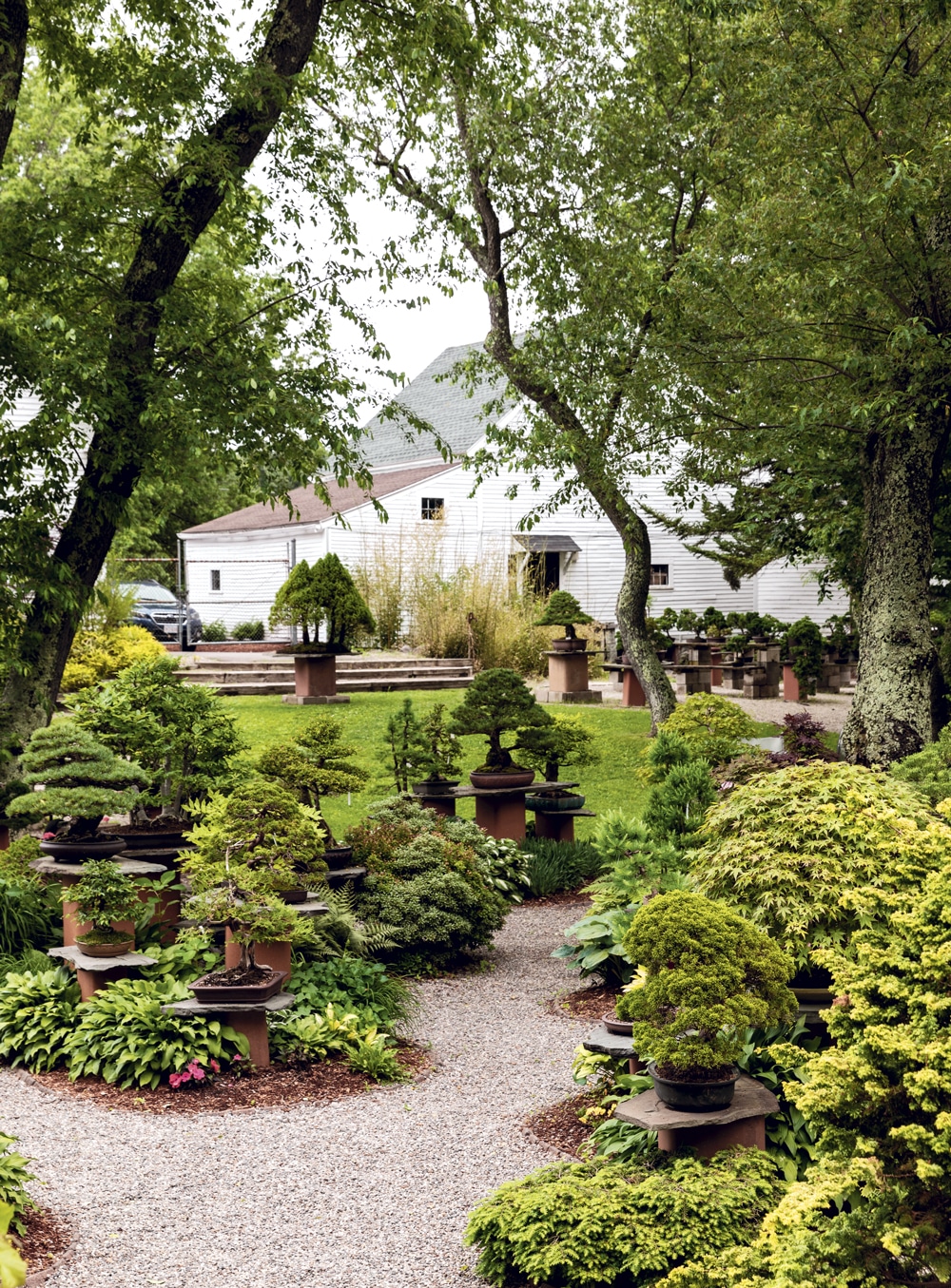
Photo Credit : Greta Rybus
Not only does Levin house trees sculpted by visiting artists, but he also has trees created by clients, students, and relative strangers. People bring their trees when they get sick, and he works to restore them, a process that can take months or years. “People form huge emotional attachments to trees,” he says. Judy Duggan, a longtime volunteer at Bonsai West, keeps a dozen trees that were originally collected by her late husband. “When he passed away, the collection that I had only casually been part of became mine,” she says. “It was like a legacy.”
And while some inherit trees or get them as gifts, others are simply bitten by the bonsai bug.” Although Levin has had a princess from the United Arab Emirates leave with a $7,000 bonsai, these big-ticket purchases aren’t what drive his business. “You’d be surprised at the number of people who are buying bonsai with their tip money,” Levin says. “They get struck by bonsai the way I did, and become passionate about it.”
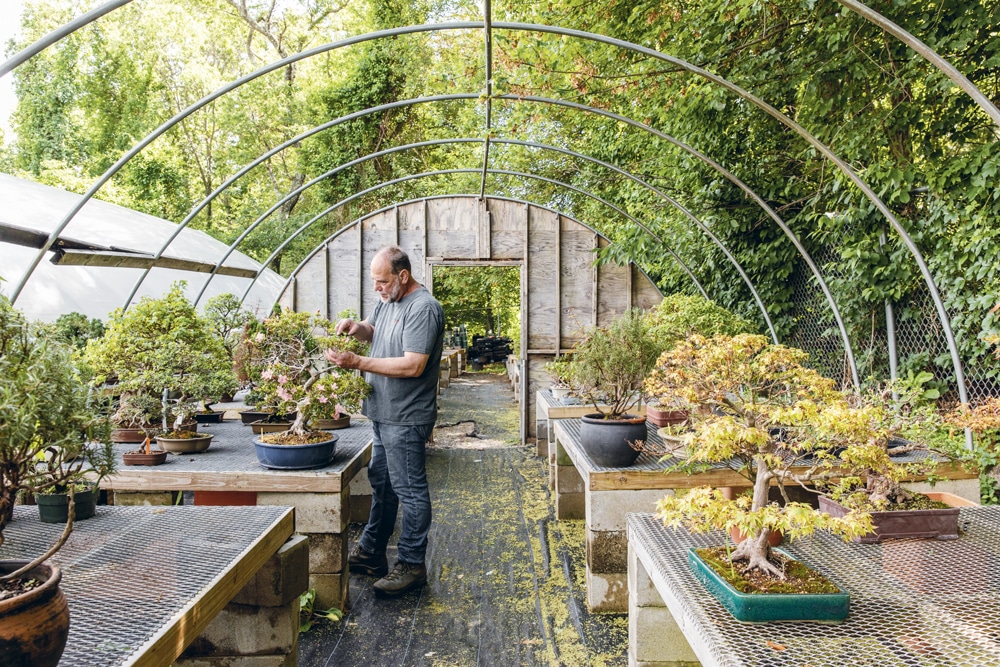
Photo Credit : Greta Rybus
Over the years, he has bred his own competition, teaching bonsai artists who’ve gone on to start their own businesses, and he has watched the art form evolve from the work of the original California Japanese artists to today’s “young kids” who are pushing the genre. It’s an exciting time to be a part of bonsai. “The way bonsai are being created now, with deadwood and abstract forms, that’s a 21st-century phenomenon,” he says. “I’ve seen a huge interest in bonsai among the younger generations.”
Maybe it’s an aspect of what The New York Times has described as millennials’ “obsession” with houseplants—but deeper, given bonsai’s level of commitment. As Levin says, “There are few things in life this real and tangible. You put your hands on the soil, on the tree, and inevitably, it will grow. People crave this slow, honest connection with something living, something old, something beautiful.”
Now, years after my first visit, I leave Bonsai West with another small tree, this time a juniper. Like many of his outdoor trees, this six-inch, winding plant has been spending its winter inside a bulkhead, where it gets no light and is sheltered from the freezing wind and snow. Levin is known in the bonsai community for his work with pines and junipers—two of the more “masculine” species, both of which can live outdoors in New England, though they must hibernate during the harshest months of the winter.
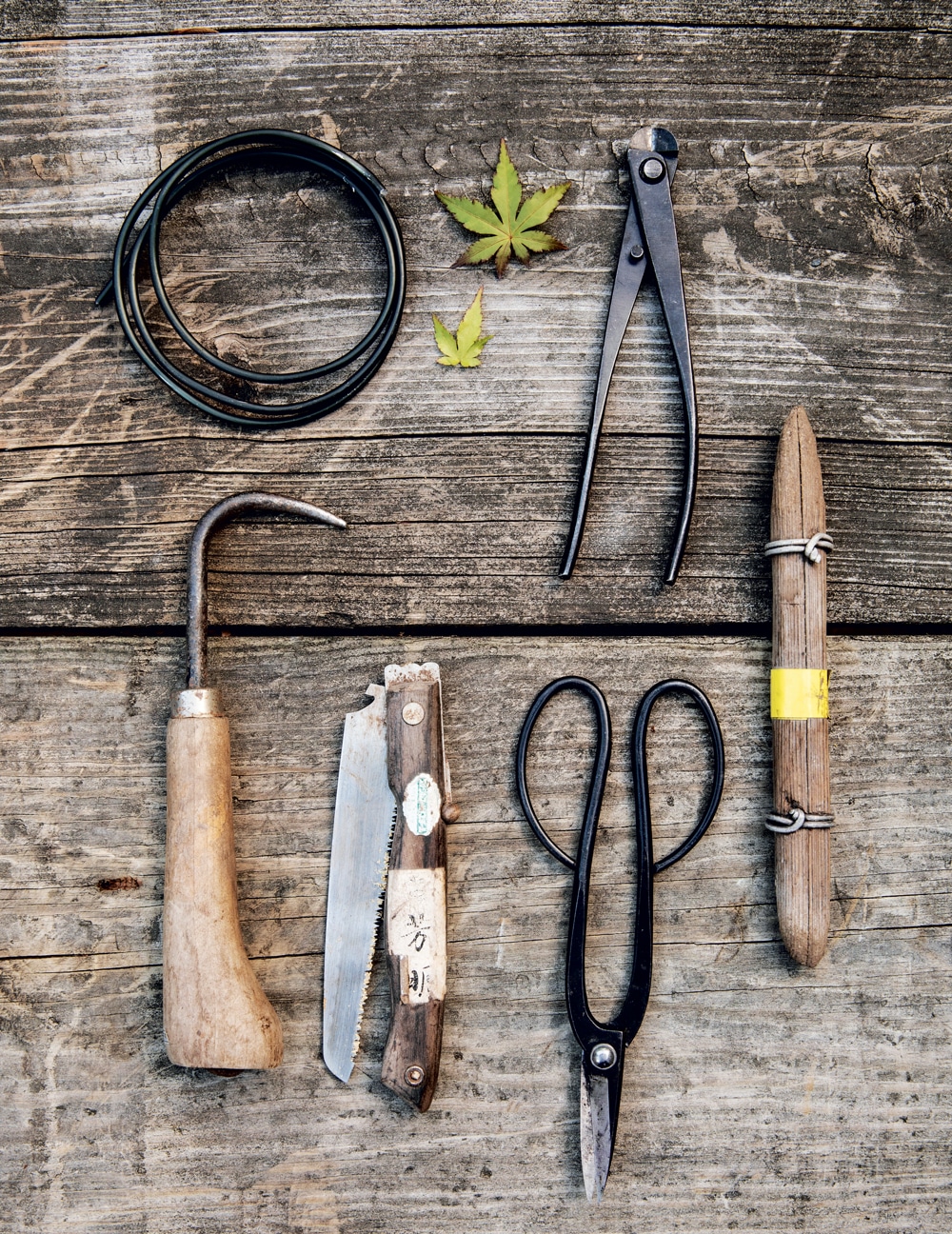
Photo Credit : Greta Rybus
This tree, Levin says, will grow alongside my unborn daughter. Earlier in the day, I revealed to him that we’re naming her Juniper. Before I leave, he instructs me on how to keep the tree alive in Maine: We have to water it only when it’s dry, and we have to stash it underground for a few weeks before we can bring it out into the light. It’s a metaphor for my swelling stomach. I manage not to cry until I get to my car, where, on the seat next to me, sits a twisted little tree in a ceramic pot, light green needles a soft halo around old, strong limbs—a gift I can give, when the time is right, to my Juniper.
For more information, including a schedule of upcoming classes, go to bonsaiwest.com.
Learn and Grow
Bonsai Gardens of Connecticut: Since the 1970s, Victor Eng has been teaching, creating, and selling bonsai. Visitors can also buy tools and pots. Manchester, CT; bonsaigardensofct.com
Entwood Bonsai: A longtime member of the Maine Organic Farmers and Gardeners Association, Ernie Glabau sells indoor and outdoor trees. Burnham, ME; 207-948-3244
New England Bonsai Gardens: The region’s largest bonsai nursery hosts numerous classes and events. Bellingham, MA; nebonsai.com
Suthin Bonsai Studio: Award-winning artist/teacher Suthin Sukosolvisit offers advanced instruction and a high-end collection. Stoughton, MA; suthinbonsaistudio.com
Shin-Boku Nursery: For more than 50 years, this nursery has specialized in Japanese garden tree-trimming and landscape gardening. Wentworth, NH; shin-bokunursery.com


